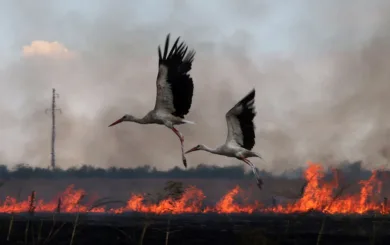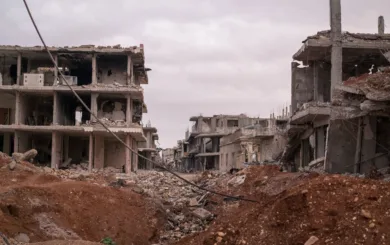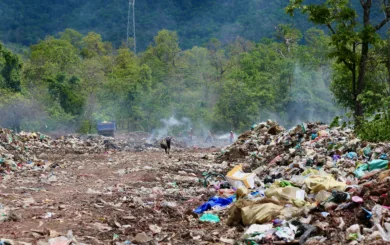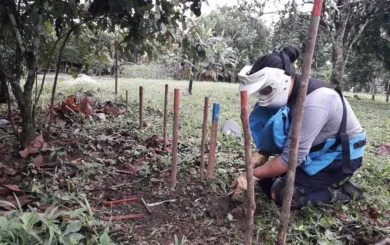How can environmental protection be enhanced in mine action and disarmament operations? With funding from the Norwegian Ministry of Foreign Affairs, Norwegian People’s Aid is taking the lead on environmental protection in the mine action and disarmament sector, fully embracing the ‘do no harm’ model of humanitarian aid.
Humanitarian disarmament operations that clear landmines and other types of unexploded remnants of war (ERW) like bombs and ammunition have not traditionally incorporated environmental concerns into survey and disposal activities. This is despite the fact that survey and disposal methods, such as large-scale vegetation cutting and use of demining machines, can cause environmental damage through pollution and soil degradation. At worse, neglecting the environment during mine action and disarmament operations can have the unintended effect of attracting people into areas that were previously uninhabited because of contamination, leading to high rates of deforestation and wildlife poaching in newly cleared areas.
Awareness has started to grow in recent years within the mine action and disarmament community about the environmental impact of survey and disposal methods and of the need to adopt new ways of working to minimize such damage. For instance, in 2017, a new International Mine Action Standard on environmental management was adopted to provide guidance to mine action operators as to how to mainstream environmental protection in their activities.
While removal of landmines and ERW can be beneficial for the environment by removing toxins and pollutants and when it is conducted in an environmentally friendly way, much remains to be accomplished in improving environmental outcomes of disarmament operations.
Improving environmental protection in NPA mine action and disarmament operations
Under a three-year partnership agreement, Norwegian People’s Aid (NPA) and the Conflict and Environment Observatory (CEOBS) are working together to improve environmental safeguarding within the mine action and humanitarian disarmament sector. The work is funded through the Norwegian Ministry of Foreign Affairs.
Based on wide-ranging consultations across the sector and a literature review of existing best practice, CEOBS and NPA will be appraising current activities and operations through a series of field visits, assessing local environmental practices and identifying key environmental and socio-economic issues. Through engagement and collaboration with local agents, we will develop relevant safeguarding policies and training materials to raise awareness on the environmental protection. We will also be developing new tools for field operations to integrate environmental protection into all phases of mine action and disarmament operations, thus reducing any potential adverse environmental impacts from NPA’s field operations and managing risks to local communities from other conflict-related environmental impacts.
News and updates

The Silent Victim of the War in Ukraine

Protecting the environment from the direct and reverberating effects of explosive weapons is a vital component of civilian protection.

Laos in a greener direction


